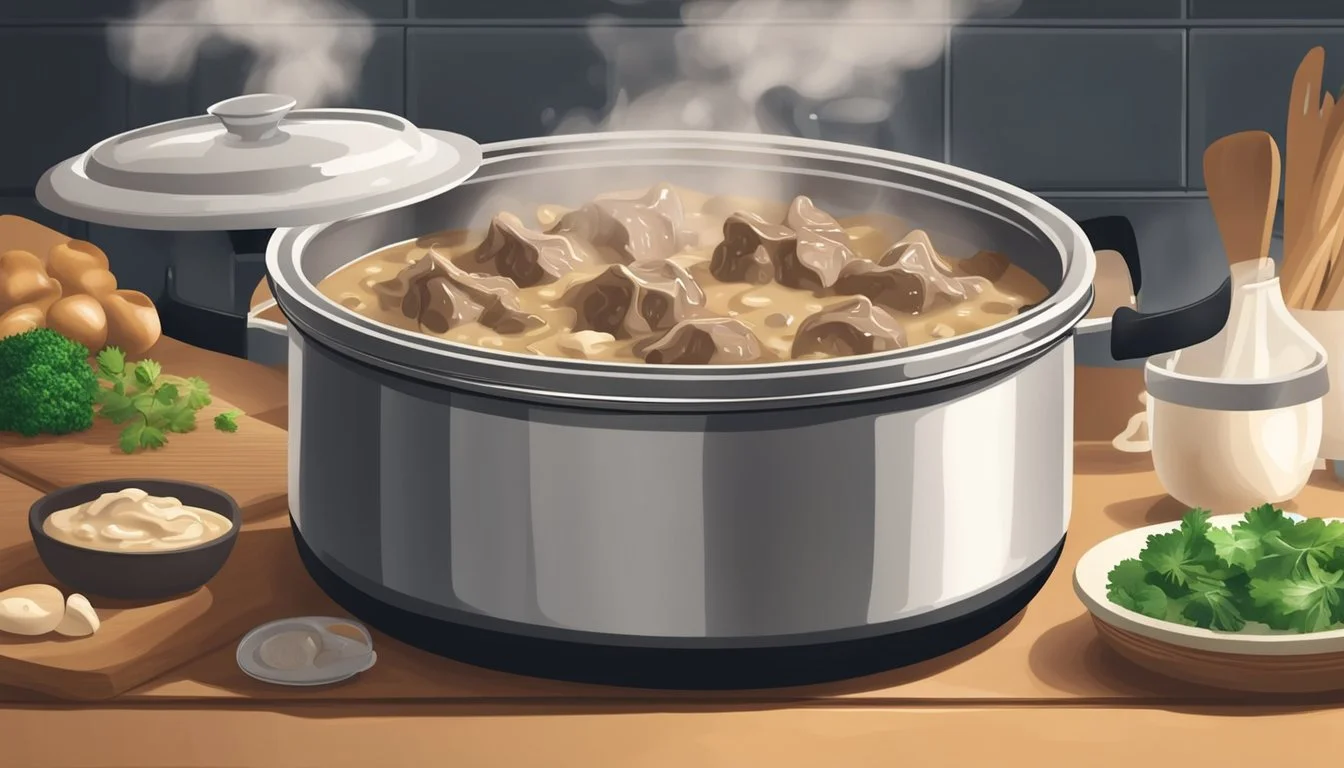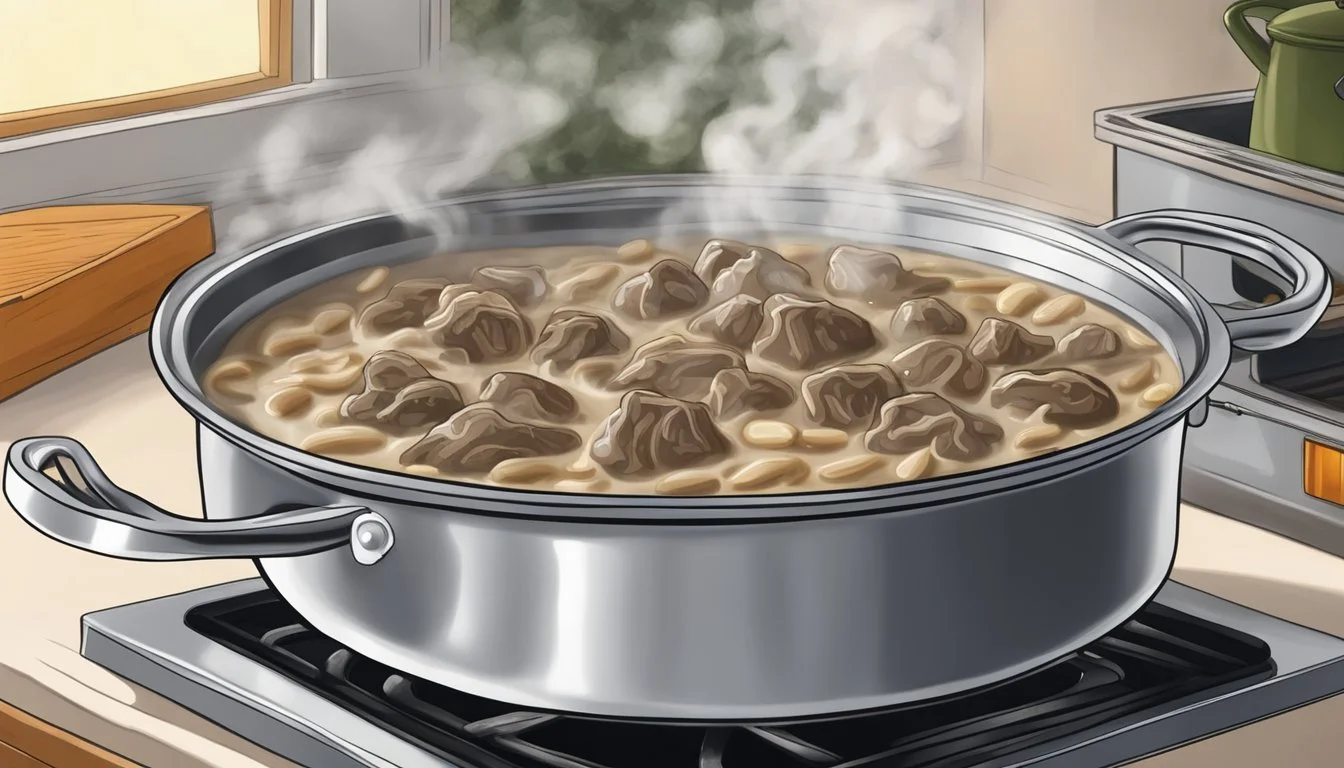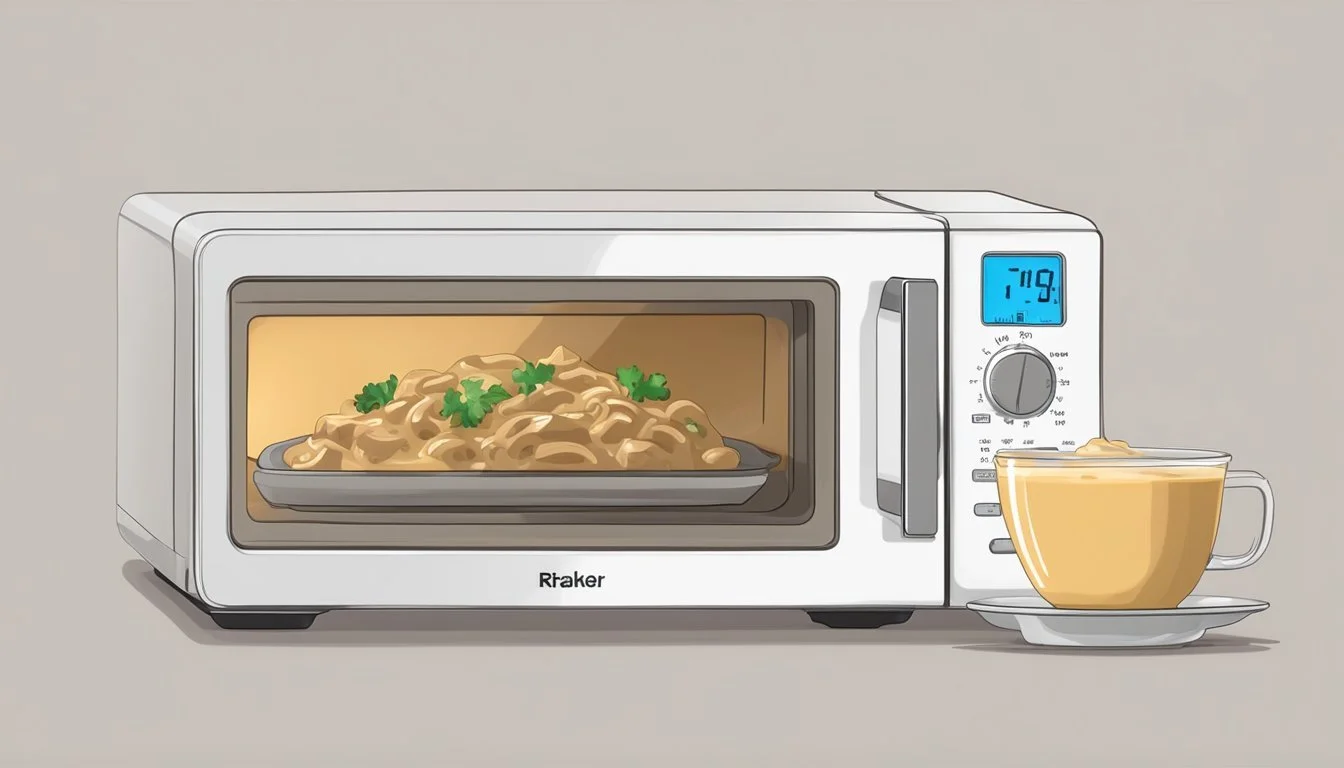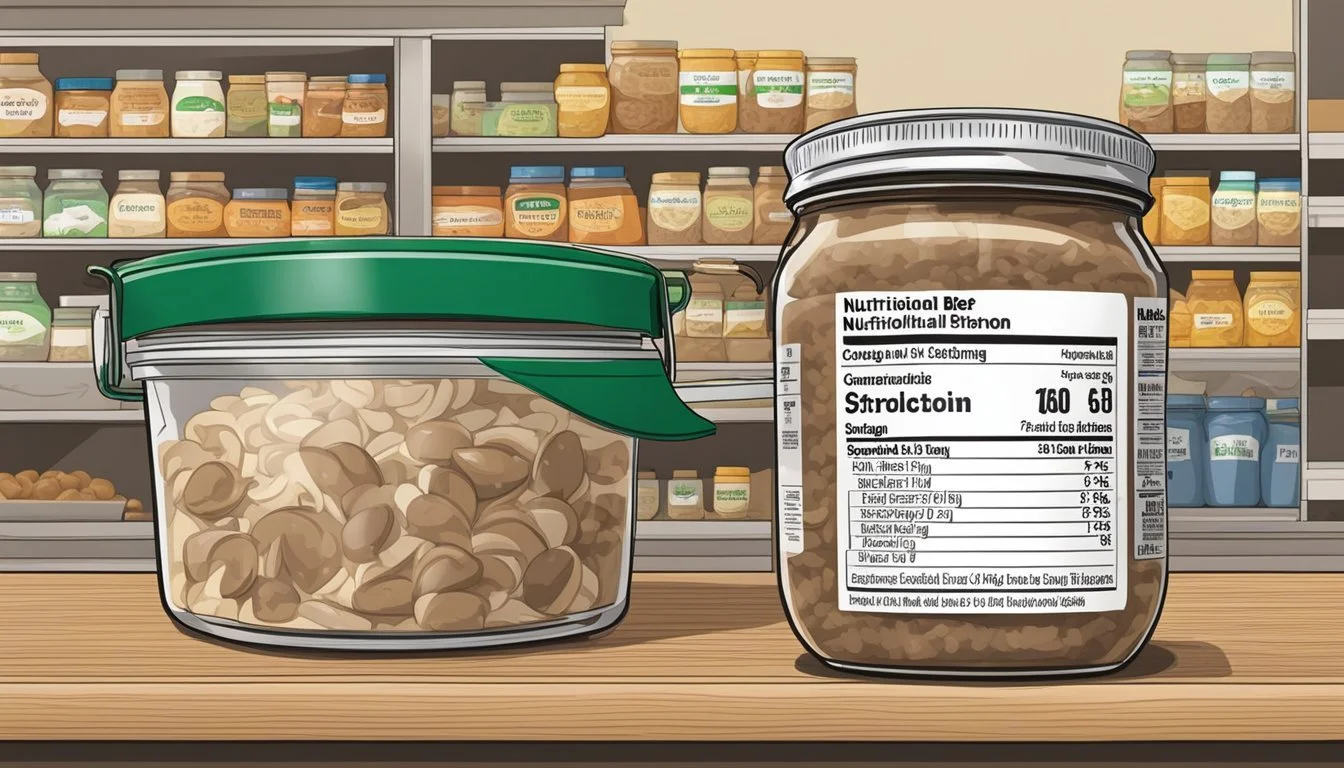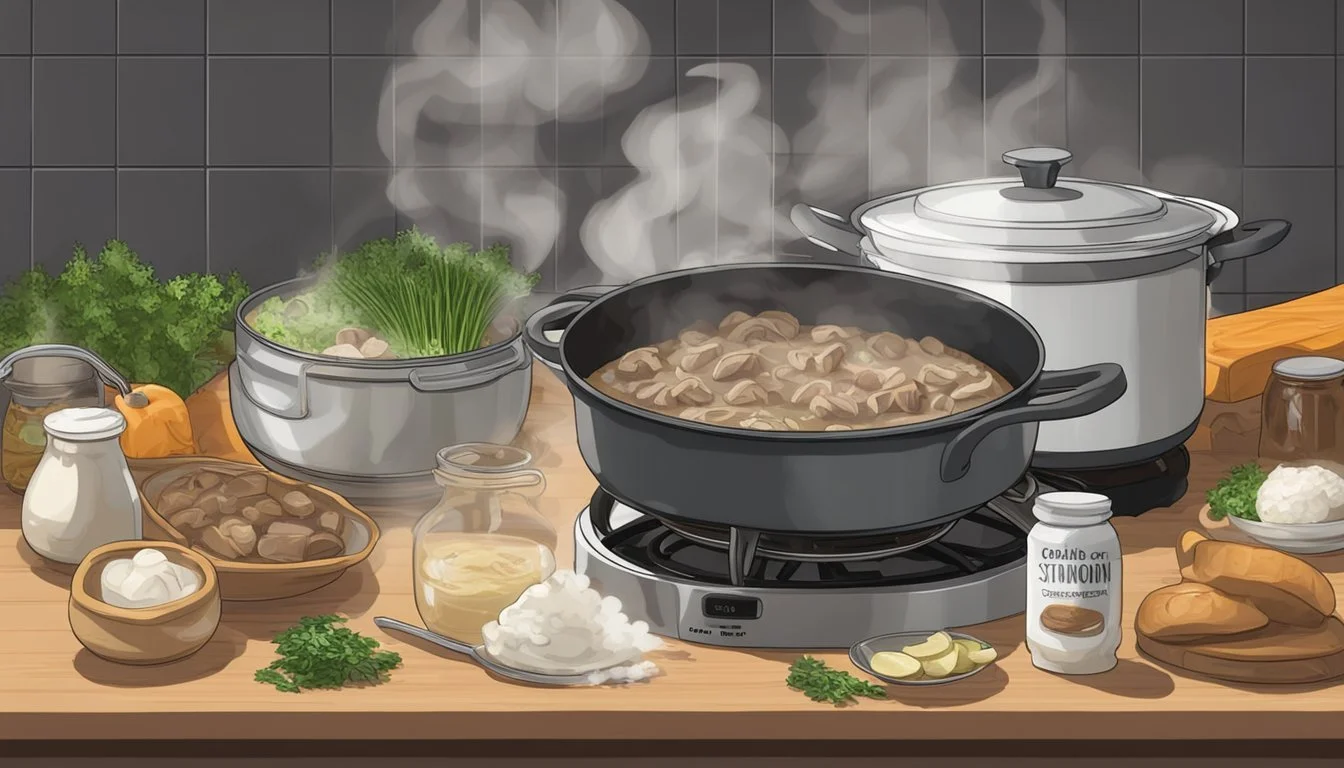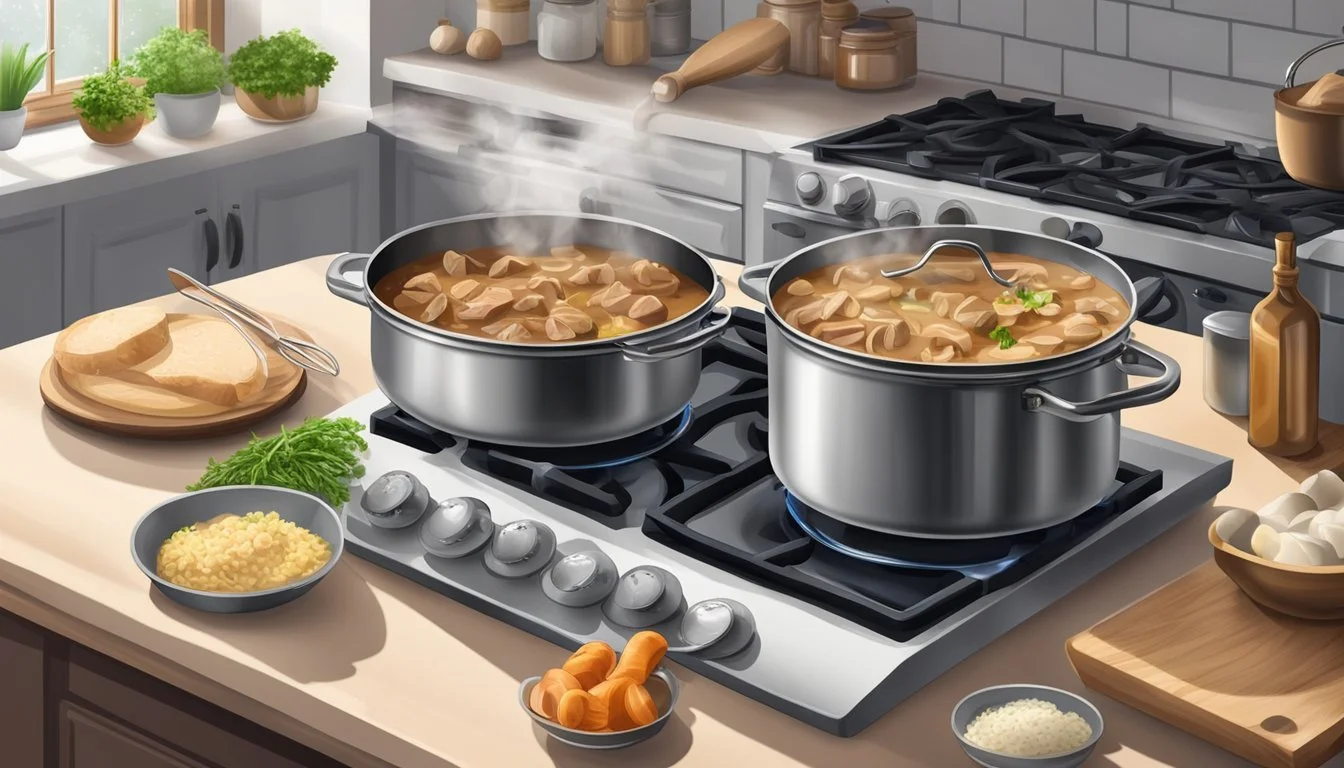How Long Does Beef Stroganoff Last?
Proper Storage and Shelf Life Tips
For those who love the creamy, comforting flavors of beef stroganoff, knowing how long this dish lasts is crucial for planning meals and avoiding food waste. Freshly prepared beef stroganoff can be stored in the refrigerator for 3-4 days. The cool temperature helps maintain the dish’s flavors and texture, making it a perfect candidate for multiple meals throughout the week.
Cooked with a mouth-watering combination of tender beef, mushrooms, onions, and a savory sauce, this popular recipe is a hit at any dinner table. It's important to store it in an airtight container to extend its freshness. For those looking to enjoy it beyond a few days, freezing beef stroganoff is a great option. When properly frozen, it stays good for up to 2-3 months, ready to be reheated whenever a comforting meal is desired.
Be mindful of signs of spoilage to ensure you’re consuming it at its best. Changes in smell, texture, or the appearance of mold indicate it’s time to toss the leftovers. With these storage tips, you can relish the rich flavors of beef stroganoff without sacrificing quality or safety.
Basics of Beef Stroganoff
Beef Stroganoff is a classic dish known for its rich and creamy sauce.
The recipe typically starts with tender beef strips, often from cuts like sirloin or tenderloin, which are browned quickly to retain their juiciness.
Mushrooms are a central ingredient, adding a depth of flavor. They are usually sautéed with onions to create a savory base for the dish.
To achieve the creamy consistency, a cream sauce is made using ingredients like sour cream, beef broth, and sometimes mustard.
Once combined, these ingredients create a velvety sauce that coats the beef and vegetables.
The dish is traditionally served over noodles, but it can also be enjoyed with rice or mashed potatoes.
Beef Stroganoff is best enjoyed with fresh ingredients to maximize its flavors. However, leftover beef stroganoff can be refrigerated for a few days and reheats well, maintaining its delicious taste.
Preparing and cooking Beef Stroganoff is straightforward, making it a favorite for many home cooks.
Shelf Life of Beef Stroganoff
Beef stroganoff's shelf life varies based on storage conditions. Knowing these can help ensure the dish remains safe and flavorful.
At Room Temperature
Beef stroganoff should not be left at room temperature for more than two hours. Bacteria can multiply rapidly between 40°F and 140°F, increasing the risk of foodborne illness. If the room temperature is above 90°F, the dish should be refrigerated within one hour. Always store leftovers properly in a well-sealed container if immediate refrigeration is not possible.
In the Refrigerator
In the refrigerator, beef stroganoff can last between 3 to 4 days. It's essential to store it in an airtight container to minimize exposure to air, which can cause spoilage. The cool temperature of the refrigerator slows bacterial growth, preserving both the quality and safety of the dish. Make sure to cool the stroganoff quickly by dividing it into smaller portions before refrigerating.
In the Freezer
Beef stroganoff can remain safe to eat for up to 3 months in the freezer. Freezing at a constant 0°F prevents bacterial growth. For best quality, store in airtight containers or heavy-duty freezer bags to prevent freezer burn. Label each container with the freezing date to ensure it is consumed within the safe period. Thawing should be done in the refrigerator or through safe methods such as in a microwave or cold water.
Safe Storage Practices
Properly storing beef stroganoff ensures it remains safe to consume and prevents foodborne illnesses. Ensuring airtight storage, appropriately portioning leftovers, and avoiding contamination are essential practices.
Airtight Containers
Using airtight containers is crucial for maintaining the quality of beef stroganoff. Containers with tight seals prevent moisture from entering or escaping, preserving the texture and flavor of the dish.
Plastic wrap can be used as an additional layer of protection inside the container to limit exposure to air. Glass or BPA-free plastic containers work well for this purpose. Properly sealed containers also help reduce the risk of bacterial growth by limiting the entry of airborne bacteria.
Portioning Leftovers
Portioning leftovers into single servings before refrigerating makes reheating more efficient and helps maintain the dish's integrity. Smaller portions cool more quickly, reducing the time they spend in the bacterial danger zone (40°F - 140°F).
Portion sizes should be manageable to ensure they're consumed in one sitting, reducing the risk of repeated heating and cooling, which can affect both safety and quality. Using multiple smaller containers rather than one large container also helps prevent overcrowding in the fridge, allowing air to circulate and keep all portions at a consistent temperature.
Avoiding Contamination
Avoiding contamination starts with proper handling techniques. Wash hands thoroughly before and after handling food. Use clean utensils and surfaces to prevent cross-contamination. When placing beef stroganoff in the refrigerator, ensure it’s stored away from raw meats to prevent cross-contamination from raw juices.
Gas and moisture buildup should also be minimized. Regularly check and clean the fridge to remove any spills or debris that could harbor bacteria. Label containers with the date of storage to ensure older leftovers are used first, adhering to the safe storage timeline.
Identifying Spoilage
Recognizing signs of spoilage is essential for avoiding foodborne illnesses and ensuring that leftover beef stroganoff is safe to eat. Key indicators include visible mold growth, bad odor, and discoloration, which signal the presence of harmful bacteria.
Visible Mold Growth
One of the most apparent signs of spoilage is visible mold growth. Mold can appear as fuzzy patches that are green, white, black, or blue. Even a small spot of mold indicates that the entire dish is contaminated and should be discarded immediately.
Mold thrives in moist environments, making beef stroganoff a prime target if not stored correctly. Visible mold not only spoils the flavor but also poses health risks because it can harbor harmful bacteria. Always check leftovers for any unusual growths before considering consumption.
Odor and Discoloration
Odor is a critical indicator of spoilage in beef stroganoff. A sour, rancid, or overly strong smell often suggests that bacterial growth has occurred. Fresh beef stroganoff should have a rich, savory aroma; any deviation from this is a warning sign.
Discoloration is another sign that the dish has spoiled. Beef stroganoff should have a consistent color. If the beef turns a grayish-brown or the sauce appears more yellow than usual, it’s an indication of spoilage. These visual cues often accompany bad odors and further confirm that the dish is unsafe to eat.
Freezing and Thawing
Freezing beef stroganoff can extend its shelf life significantly. Properly freezing and thawing techniques are crucial to maintain quality, texture, and flavor.
How to Freeze Beef Stroganoff
Cool the beef stroganoff completely before freezing. Place it in airtight containers or freezer bags, ensuring to remove as much air as possible. Label each container with the date and contents. Freeze the stroganoff at 0°F or below for up to 3 to 4 months. This helps prevent freezer burn and ensures the dish retains its flavor and quality.
Thawing Techniques
When ready to eat, thaw the beef stroganoff in the refrigerator overnight. Avoid thawing at room temperature as this can promote bacterial growth. For quicker thawing, place the container in cold water, changing the water every 30 minutes. Once thawed, reheat the stroganoff on the stove or in the microwave until it’s steamed hot.
Impact on Texture and Flavor
Freezing may slightly alter the texture, especially of ingredients like noodles. To minimize texture changes, slightly undercook the noodles before freezing. This way, they maintain a better bite upon reheating. Proper storage and timely thawing ensure the flavors stay intact, providing a satisfying meal even after being frozen.
Reheating Beef Stroganoff
To enjoy your leftover beef stroganoff without compromising on taste and texture, follow these specific methods. Each technique ensures the dish retains its creamy nature and reaches a safe-to-eat internal temperature of 165°F.
Using a Microwave
The microwave is a quick and convenient way to reheat beef stroganoff. Place the stroganoff in a microwave-safe dish. Adding a splash of broth or cream will prevent it from drying out. Cover the dish with a microwave-safe lid or wrap to keep in moisture. Heat on medium power for 2-3 minutes, stirring halfway through. Check the internal temperature to ensure it reaches 165°F before serving. If necessary, continue heating in short bursts to avoid overcooking.
Stovetop Method
Reheating on the stovetop helps maintain the dish's texture. Transfer the beef stroganoff to a skillet or saucepan. Add a splash of broth or cream to restore its creamy consistency. Heat over medium-low, stirring frequently to prevent sticking and ensure even heating. Avoid high heat, as this can cause the beef to toughen and the sauce to separate. The goal is a smooth, creamy texture. Once the internal temperature hits 165°F, it's ready to serve.
Oven Reheating
The oven method is excellent for reheating large portions. Preheat the oven to 350°F (175°C). Transfer the stroganoff to an oven-safe baking dish and cover it with aluminum foil to retain moisture. Bake for 20-25 minutes, stirring halfway through if possible. Ensure the internal temperature reaches 165°F before serving. This method offers evenly reheated beef stroganoff without compromising its creamy texture.
Nutritional Information
Beef Stroganoff is a dish that offers a range of nutrients. The caloric content of Beef Stroganoff can vary, typically ranging from 300 to 400 calories per cup depending on the recipe and portion size.
Key Nutritional Facts
Calories: Approximately 350-400 per cup
Fat: Around 15-16 grams per cup
Protein: Approximately 26 grams per cup
Micronutrients
Iron: Present in significant amounts due to the beef content, contributing to daily iron intake.
Vitamin A: Approximately 820 IU per 100 grams, beneficial for eye health.
Carbohydrates and Fiber
Carbohydrates: About 8.4 grams per 100 grams
Fiber: Minimal to none, as Beef Stroganoff typically lacks vegetables high in fiber.
Additional Nutritional Information
Sodium: Around 435 mg per 100 grams, which can be on the higher side due to added sauces.
Glycemic Index: The GI of Beef Stroganoff is approximately 53, making it a moderate glycemic food.
Nutritional Summary Table
Nutrient Approximate Value per Cup Calories 350-400 Fat 15-16 grams Protein 26 grams Iron Moderate (varies by recipe) Vitamin A 820 IU per 100 grams Carbohydrates 8.4 grams per 100 grams Fiber Minimal to none Sodium 435 mg per 100 grams Glycemic Index 53
This outline provides a comprehensive look at the nutritional content of Beef Stroganoff, making it easier for readers to assess its health value and tailor their diet accordingly.
Best Practices for Cooking Beef Stroganoff
Key aspects to focus on include selecting high-quality ingredients, using effective cooking techniques, and enhancing flavor through proper seasoning.
Selecting Quality Ingredients
Ribeye steak or chuck roast work well for beef stroganoff due to their tenderness. Opt for fresh mushrooms, preferably cremini or button, to complement the cream sauce. Use fresh onions and garlic for a deep, aromatic flavor. High-quality beef broth and Worcestershire sauce add richness to the sauce. Ensure the sour cream or Dijon mustard is fresh to maintain the dish's overall taste. Proper seasoning with salt and black pepper also enhances the dish's depth.
Cooking Methods and Techniques
Begin by browning the beef in a hot skillet to seal in juices, which prevents it from becoming tough. Sear quickly, about 30 seconds per side, then set it aside. Sauté onions and garlic until translucent before adding mushrooms. Ensure they are soft before incorporating other ingredients. Combine flour and butter to make a roux for thickening the sauce. Stir in the beef broth, allowing it to boil and then simmer. This step ensures flavors meld together. Add the seared beef back at the end to prevent overcooking.
Seasoning and Flavor Enhancements
Worcestershire sauce and Dijon mustard provide a tangy, savory complexity. Adjust seasoning by tasting frequently, adding salt and black pepper as needed. Fresh parsley sprinkled on top offers a bright finish and a vibrant look. For a creamier texture, incorporate a bit more sour cream. Experiment with a touch of hot paprika or mustard to taste, balancing the richness of the cream sauce against the earthiness of the mushrooms and the tenderness of the beef. This careful layering of flavors contributes significantly to the overall success of the dish.
Accompaniments and Variations
When enjoying beef stroganoff, pairing it with suitable accompaniments and exploring variations can elevate the meal. Consider combining it with traditional egg noodles, alternative starches like rice and mashed potatoes, and adding a variety of vegetables.
Traditional Egg Noodles
Beef stroganoff is often served with egg noodles. Their broad, flat shape holds the creamy sauce well, ensuring each bite is flavorful. Egg noodles cook quickly, usually in 6-8 minutes, making them a convenient option. They provide a slightly chewy texture that contrasts nicely with the tender beef and rich sauce. Adjust for doneness based on personal preference, whether al dente or softer.
Alternative Starches
For those looking to vary their starch options, rice and mashed potatoes are excellent choices. Fluffy white or brown rice absorbs the savory sauce while adding a different texture. Mashed potatoes offer a creamy, smooth base that complements the richness of the stroganoff. Baked potatoes can also serve as a hearty alternative, with the sauce poured over the open-faced potato, offering a satisfying combination.
Vegetable Additions
To add more nutrients and color to the dish, incorporate vegetables like spinach, mushrooms, and bell peppers. Sautéed spinach can be stirred into the sauce just before serving, providing a slight bitterness that balances the dish. Mushrooms enhance the umami flavor, complementing the beef without overpowering it. Bell peppers add a sweet crunch. Including these vegetables not only diversifies the texture but also adds layers of flavor, making the beef stroganoff more versatile and appealing.
Recipe Tips and Tricks
Use Quality Beef: Opt for tender cuts like sirloin or tenderloin to ensure the meat remains juicy and flavorful. Properly trimming any excess fat can also improve the dish's texture.
Proper Searing: Brown the beef in small batches to avoid overcrowding. This ensures an even sear, which enhances flavor. A hot skillet is key for achieving a good crust.
Cutting Techniques: Slice the beef into thin, uniform strips. This helps with even cooking and ensures each piece retains its tenderness.
Thickening the Sauce: Use flour or cornstarch to thicken the sauce. Mix it with a bit of cold water before adding to the hot mixture to avoid clumps.
Slow Cooker Option: For an easy and hands-off approach, consider using a slow cooker. Sear the beef first, then transfer it along with the sauce ingredients to the slow cooker. Cook on low for 6-8 hours for tender, flavorful results.
Mushroom Selection: Choose fresh mushrooms like cremini or button mushrooms. They add depth and umami to the dish. Sauté them until they release their juices and become golden brown.
Leftover Storage: Store any leftovers in an airtight container in the refrigerator. Beef Stroganoff can typically last 3-4 days when properly stored. Reheat gently to avoid drying out the meat.
Flavor Enhancers: Incorporate seasonings like paprika and Worcestershire sauce for additional depth. Adjust salt and pepper to taste.
Dairy Choices: Sour cream is traditional, but Greek yogurt can be a healthier substitute. Stir it in at the end of cooking to prevent curdling.
Serving Suggestions: Serve the stroganoff over egg noodles, rice, or mashed potatoes. Fresh parsley or dill can be sprinkled on top for a burst of color and freshness.

